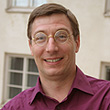Judging a book by its cover

Following up from a communication workshop organised by the American Meteorological Society, this book is a good reference for scientists, and especially for atmospheric scientists. The book touches on different aspects of intra-community communication, writing papers, reports, preparing presentations to be delivered in conferences and workshops, etc. Even though the book covers such a wide range of topics, one shortcoming is its treatment of public and media communication, as the author only dedicates six pages out of 412 to this important aspect of modern science communication for researchers. This is a great companion for scientists who must write and present their research, but is not intended as a book for science communicators.
Now, I don’t think I ever said anywhere in Eloquent Science that its purpose was to provide detailed information about communicating with the public (although the lessons in communication to scientists—addressing the concerns of your audience, concision, being interesting—should be applicable in those situations, as well). In fact, the back of the book states, “This must-have reference is loaded with tips for writing and reviewing scientific journal articles and creating and delivering scientific presentations….” All that is said about other types of communication is “Sidebars written by experts on topics such as … communicating with the media.”
If you want more information about communicating with nonscientists, see p. 389, where I list seven other guide books that are way more complete than I ever could be. I am also a big fan of Randy Olson’s Don’t Be Such a Scientist, as I discuss here.
I can only be amused that the book is being faulted for something it was never intended to be.
Oh well, they say that all press is good press.



Thank you for your note about CAPjournal. Very much appreciated.
Indeed, you never said that Eloquent Science was intended as a guide to communicating science with the public. However, I believe that a big part of becoming a better scientist is to communicate his/her research with the public.
That said, I am a big fan of your book and it should be in every scientist shelf.
Thanks, Pedro. Nice to hear from you. I am glad you liked the book.
Also, one other correction, the development of the book came from a workshop was run by me over the course of several years as part of a different program (Research Experience for Undergraduates in Norman, Oklahoma). The AMS published the book (and now supports its own Eloquent Science workshops).
Best,
Dave